
It happens all too often when speaking to a fellow American and bragging about Michigan—as I frequently do. I’ll rave about the abundant nature, untouched coastline, and pristine beaches, and the person will nod approvingly, and then, having clearly never seen any proper images of the Great Lakes, say, “Yeah, but they’re lake beaches,” as if that somehow diminishes the wonder, and I have to refrain from backhanding the beverages off of the table and shouting in protest.
For most people, the word “lake” brings with it images of small inland bodies of warm brown water, boating in tight circles or floating and drinking beer on a glorified puddle where you can read somebody’s t-shirt or have a conversation from one side of the “lake” to the other.
So when I’m going on and on about the pure awe-inspiring wonder of Lake Superior, people are picturing a muddy pond fit for a golf course. And that is extremely frustrating.
Because that’s not the Great Lakes at all; it’s especially not Lake Superior.
Standing on the shores, listening to the wash and pull of the cold clear water, and staring at the dark blue horizon line in the distance, one gets the feeling that the Great Lakes demand their own category.
For those who haven’t seen them, it’s impossible to explain their size and gravity.
How do you even write about one of the biggest-purest-so-awe-inspiring-you-run-out-of-superlatives natural wonders on the planet?
In short, you can’t. I surely can’t anyways. I can’t even claim to know Lake Superior all that well, as I only know our tiny corner of it.
It’s beautiful, grounding, and so d*mn big it’s mind-boggling.
The Upper Peninsula of Michigan, where I’m from, has 1,700 miles (2,700 km) of coastline, the majority of which is with Lake Superior, the biggest of the Great Lakes and the largest freshwater lake by surface area in the entire world.
Quick math class throwback: if a speedboat left the eastern point of the lake at Sault St. Marie traveling at 60 miles per hour—knots are too damn confusing—and another left the western point of Duluth, how long would it take them to meet in the middle?
I actually can’t be bothered to do that math either, but I can google and say that Lake Superior is 350 miles long. I’m not sure what that means in golf course pond metrics, but I’m guessing it’s around fifty bajillion “standard lakes” worth of water and surface area.
It’s around the same size as South Carolina or the country of Austria.
It is so large it could even take down a shipping freighter, as eulogized by Gordon Lightfoot in the famous “Edmund Fitzgerald” —a ship that wouldn’t even fit in most peoples’ image of a lake yet tragically sank in 1975.
Because Lake Superior is much more akin to an inland sea than a freshwater lake.
Sandwiched between the US and Canada, it’s way up north but rarely freezes over completely in winter, despite the frigid winds that rush down from Ontario, gathering moisture as they cross the water and then dump ungodly amounts of snow on us Yoopers.
Combine the sheer size of the lake with the six-month-long winters, arctic winds, and all that ice and snow, and the water is…on the colder side. The average temperature is 43 degrees Fahrenheit (6 Celsius), but that climbs to a balmy 52 (11 Celsius) in the summer.
It can be tough to wade into, even in August. But on the bright side, growing up in it, we Yoopers are a hearty-swimming bunch, rarely encountering water too cold for at least a quick dunk.
My maternal grandfather spent as much of his time as possible on the water, cruising with his captain's hat in the various decked-out Bayliners he had over the years, each bearing the name Miss Conduct. He’d sometimes just go for a sunny jaunt with family members, but more often than knot—boat people love puns—he’d take trips to Isle Royale National Park, the large untouched island way out in the middle of Lake Superior, and America’s least-visited national park.
He took our family a few times when I was young. And I have fond memories of island hopping, waking to the sound of calling loons, canoeing with siblings, staring through the unbelievably clear water at the stones and casually moving fish thirty feet below the surface, and trying damn hard to regulate my breathing after jumping off the dock and plunging into the cold.
I’ve only been back to The Island, as it’s known in the Keweenaw, once since my childhood.
In my early twenties, I was onboard the Isle Royale Queen IV, tagging along with two friends and one of their fathers, who was in the military and had gotten four tickets as part of a thank-you for Veterans’ Day.
The Queen IV is one of the only public boats that ferry workers, hikers, and outdoor enthusiasts to Isle Royale. Most of the people onboard had never visited The Island and the excitement was palpable as the captain got on the intercom and explained the day’s journey, with the standard introduction (paraphrasing), “This is your captain, Ben Kilpela. Thanks to all our service men and women for all that you do. We’ve got a great sunny day and quite a calm lake, so today’s journey should take about three hours.”
I remember he gave background and interesting information about the Queen IV and Isle Royale itself as we slipped out of Copper Harbor and into the open waters. We sat at a table below deck, played cards, and stared out into the expanse of blue water that slowly engulfed us as the Keweenaw coastline got thinner and thinner.
We saw the occasional boat drift past, and the captain interjected over the rumble of the engine with a well-told joke or little-known fact throughout the journey, and after a few rounds of cards, Skoal chewing tobacco front-lippers, and stories from my friend’s father, we were getting close.
Then, out of nowhere, the captain got on the mic and said, “I bet that is one of Jimmy Markham’s boys' boats ahead. You can tell by how many people are on it.” My ears perked, posture straighten, as I sat up, eyes wide, thinking, “Holy sh*t, did he just say Jimmy Markham?”
I don’t remember all the details or the exact number, but I know the captain went on, saying something like, “They say that Jimmy and his boys caught thirty-five lake trout in one day out here,” and then as we got closer, he said, “nope, not a Markham boat.” And I leaned and could see that the teal-colored decals didn’t look at all familiar. I turned to my friends and said, “Dude, he was just talking about my grandfather.” They nodded, acknowledged that it was pretty cool, and turned back to the card game.
But I was dumbstruck. I felt a rush of pride and remembered his funeral a few winters before.
I don’t think anybody on that ferry recognized the name, and to them, it was just a quick quip about some legendary fisherman named Jimmy Markham and his sons. I wanted to stand on my chair and shout, “Hey everybody! Quick announcement: Jimmy Markham was my grandfather and his sons are my uncles!”
Unfortunately, I didn’t, but I should have. Because my grandfather is an Isle Royale legend—scratch that: my grandfather is a Lake Superior legend.
And my uncles are carrying on the tradition.
On my mother’s side, they still take frequent trips in their own boats through rolling four-foot waves or pea-soup fog, it doesn’t matter. They head out in a convoy of a few boats to Isle Royale, let their five o’clock shadows grow, don’t shower, eat the junk food their wives never allow in the house, and they reel in massive amounts of lake trout. And I assume they still make my grandfather’s famous grilled fillets and fish nuggets.
I hope I can get back on The Big Lake in the coming weeks and take a trip out to The Island someday--although I don’t think my uncles would be excited that I brought vegan snacks and wouldn’t cast any lines.
I also hope to someday see more of Lake Superior’s coastline and properly put into words what my grandfather knew in his bones: it is one of the most special pieces of nature on Earth.
He’s often on my mind when I stand ankle-deep in that frigid water, feet starting to numb, and stare out at the horizon, understanding why early explorers thought they would drop off the end of the planet if they went far enough out to sea.
In the short summer months, when the snow and ice are gone, I always push myself to walk up to my waist, stop, and take a deep breath before dunking all the way.
No matter how unbearably arctic the temperature, I try to pause under for a moment and listen to the rhythm of the waves before picking my head up and trying desperately to stabilize my breathing.
No matter how unbearably arctic the temperature, I go in because my father always went in. He never said no to cold water and was always the first one in and the last one out.
When the lake is slightly warmer and permits a bit of swimming, I like to go out a bit and turn back to the shore, something I do in all bodies of water I’m in, and have been lucky enough to take in the lush jungles of Costa Rica, the cityscape of Barcelona, the emerald green hills of Galicia, the volcanic black sand shores of Guatemala, the rugged dry red of the Adriatic coast, and much much more.
And I can say beyond the shadow of a doubt that floating in Lake Superior and staring back at the shores of Upper Michigan is as beautiful as anything I’ve ever seen.
But you can’t stay in for long.
On my way out, I always take a breath and say thank you.
Thank you to Mother Superior.
Thank you to my father for teaching us to breathe and dive in no matter how cold.
And thank you to Grandpa Jimmy for knowing how d*mn lucky we were to live right next to one of the wonders of the world.
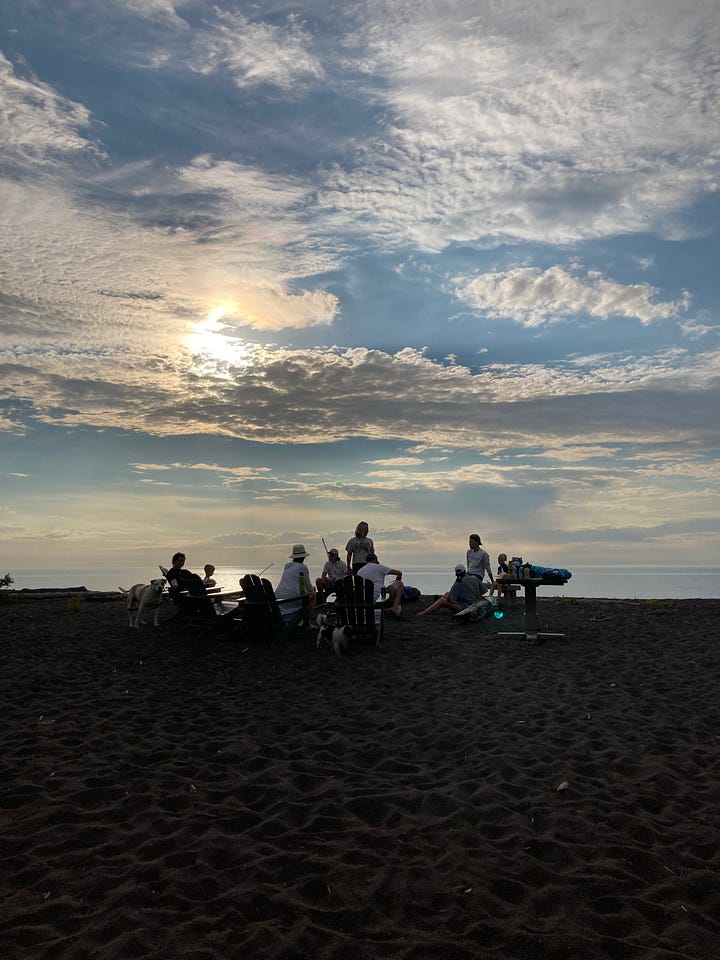
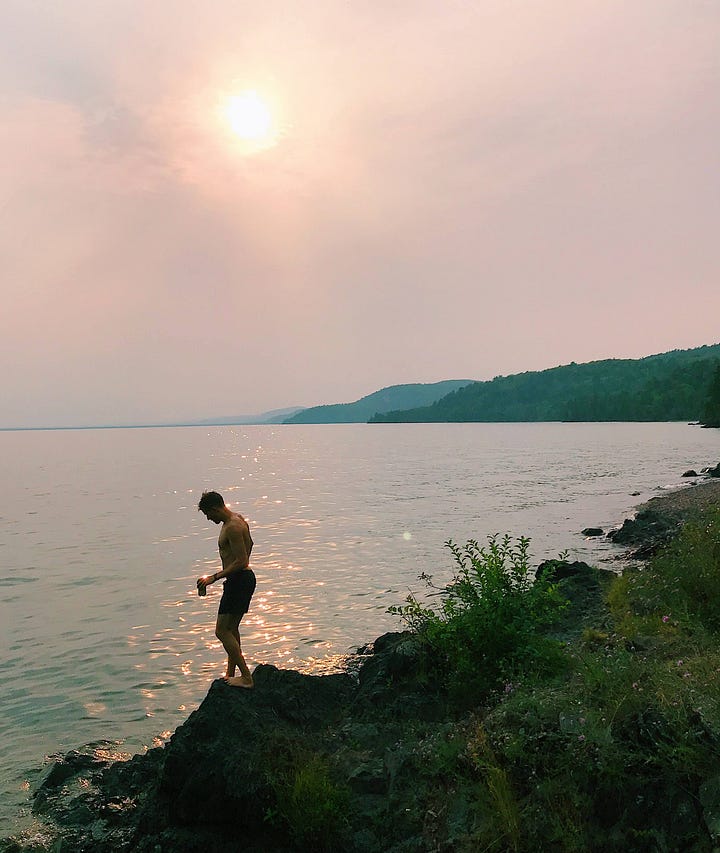

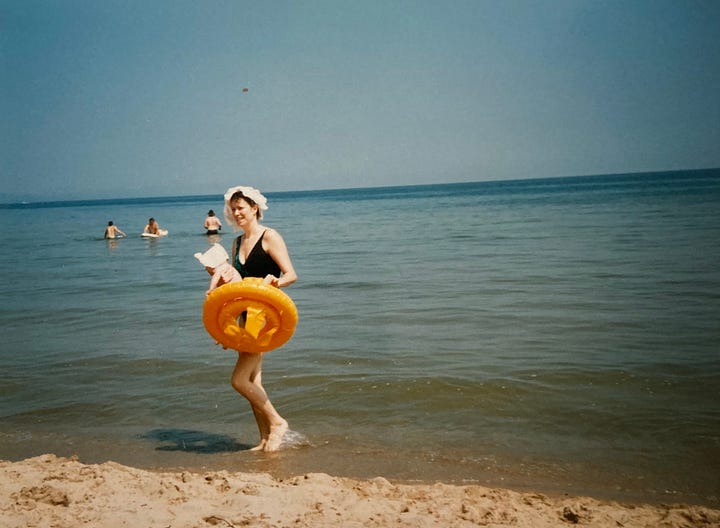

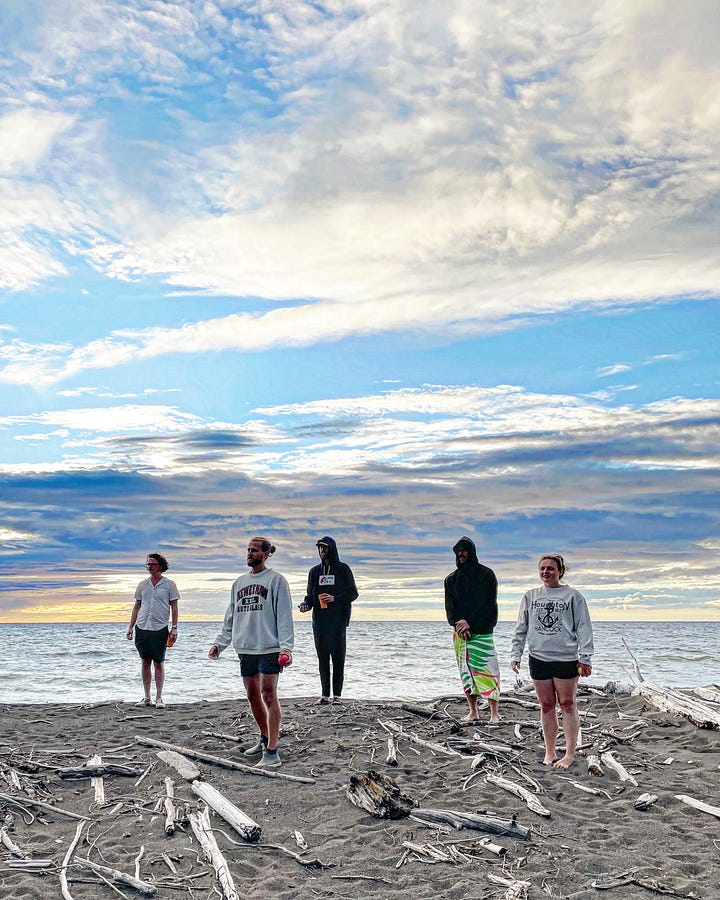
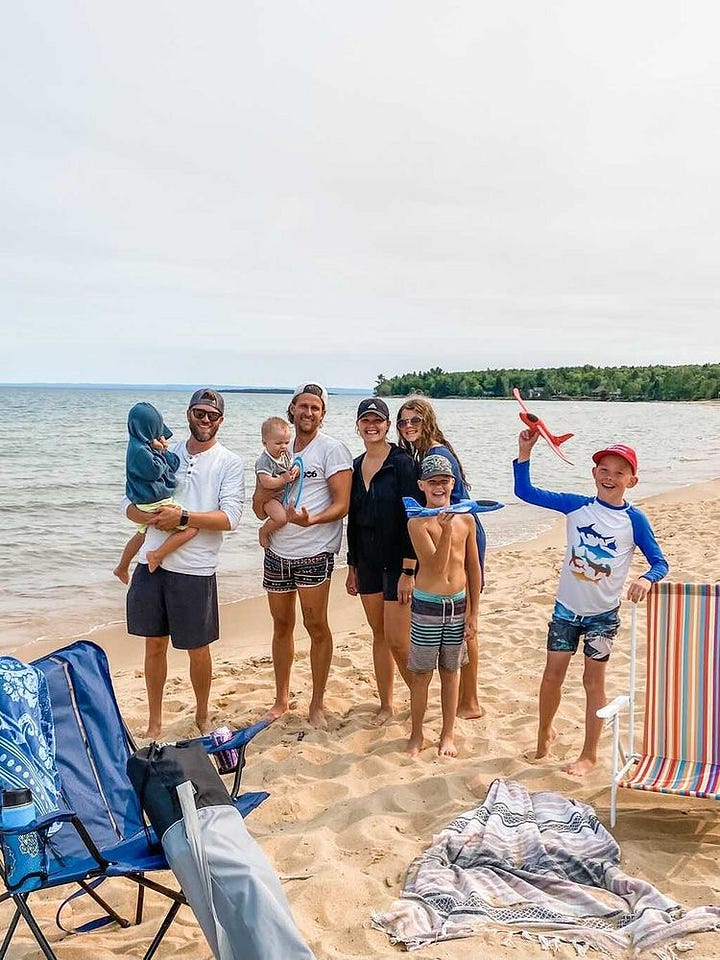
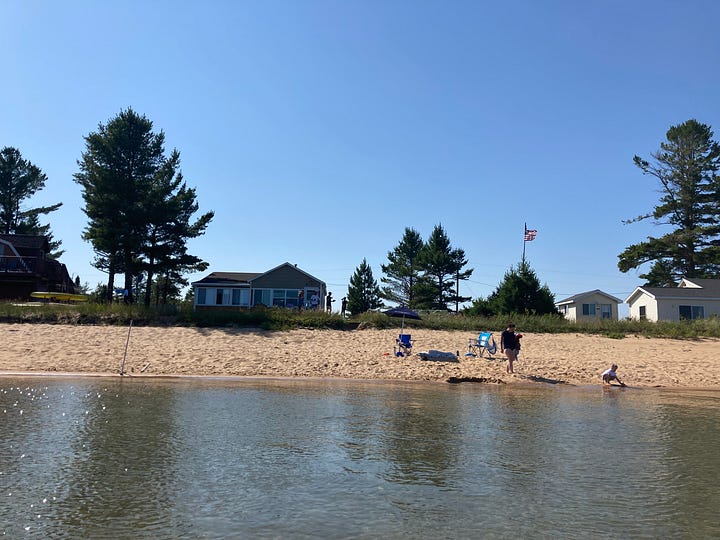






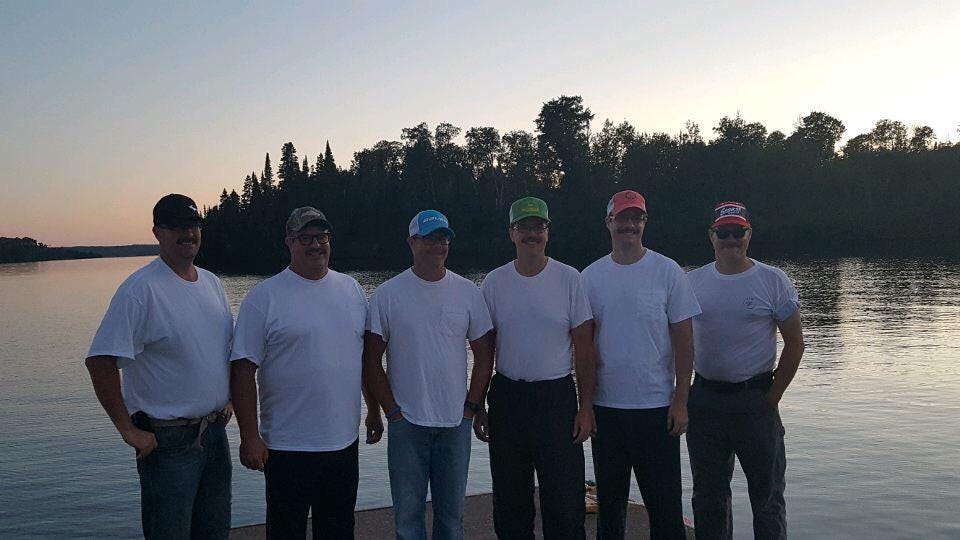
I seriously love your writing. I’m laughing, crying and smiling in one post! I miss that legend of a grandpa of yours too! Thank you for sharing this with all of us. 🙏🏻😢
Second to how to pronounce sauna, the defiant pride that we all have toward our lake is quite the thing to witness, wonderfully written, can't wait for the next one!